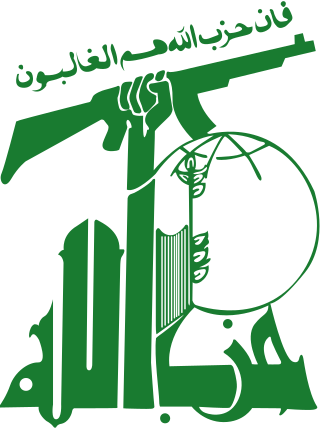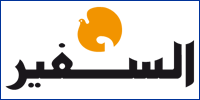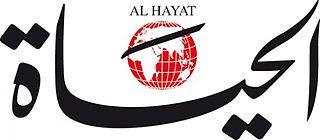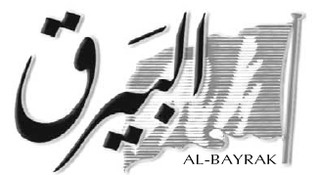
Hezbollah is a Lebanese Shia Islamist political party and militant group, led since 1992 by its Secretary-General Hassan Nasrallah. Hezbollah's paramilitary wing is the Jihad Council, and its political wing is the Loyalty to the Resistance Bloc party in the Lebanese Parliament. Its armed strength is assessed to be equivalent to that of a medium-sized army.

Lebanon, officially the Republic of Lebanon, is a country in the Levant region of West Asia. It is bordered by Syria to the north and east, by Israel to the south, and by the Mediterranean Sea to the west; Cyprus lies a short distance away from the country's coastline. Lebanon's location at the crossroads of the Mediterranean Basin and the Arabian hinterlands has contributed to the country's rich history and shaped a unique cultural identity shaped by religious diversity. Lebanon has a population of more than five million people and covers an area of 10,452 square kilometres (4,036 sq mi). Lebanon's capital and largest city is Beirut, followed by Tripoli and Jounieh. While Arabic is the official language, French is also recognized in a formal capacity; Lebanese Arabic is the country's vernacular, though French and English play a relatively significant role in everyday life, with Modern Standard Arabic being limited to news and government matters.

The culture of Lebanon and the Lebanese people emerged from various civilizations over thousands of years. It was home to the Phoenicians and was subsequently conquered and occupied by the Assyrians, the Greeks, the Romans, the Persians, the Arabs, the Crusaders, the Ottoman Turks and the French. This variety is reflected in Lebanon's diverse population, composed of different religious groups, and features in the country's festivals, literature, artifacts, cuisine and architecture of Lebanon. Tourism in Lebanon is popular with periods of interruption during conflict.

Al-Manar is a Lebanese satellite television station owned and operated by the political party Hezbollah, broadcasting from Beirut, Lebanon. The channel was launched on 4 June 1991 and it is a member of the Arab States Broadcasting Union. The station is considered one of Hezbollah's most important global propaganda tools and reaches around 50 million people.

An-Nahar is a leading Arabic-language daily newspaper published in Lebanon. In the 1980s, An-Nahar was described by TheNew York Times and Time Magazine as the newspaper of record for the entire Arab world.

As-Safir, was a leading Arabic-language daily newspaper in Lebanon. The headquarters of the daily was in Beirut. It was in circulation from March 1974 until December 2016. The last issue of the paper was published on 31 December 2016. The online version was also closed on the same date.

Al-Hayat was a London-based, pan-Arab newspaper owned by Saudi Prince Khalid bin Sultan, that had a circulation estimated over 200,000. It was the newspaper of record for the Arab diaspora and the preferred venue for liberal intellectuals who wished to express themselves to a large public. Founded in 1946, the paper closed in March 2020 after years of financial problems.
Al-Ittihad is an Arabic language newspaper published daily in the United Arab Emirates. It is part of the Abu Dhabi Media group, a state-owned organization. The paper is the first regular publication of the country.

Télé Liban is the first Lebanese public television network, owned by the Lebanese government. It was a result of a merger of the privately run Compagnie Libanaise de Télévision (CLT) and Télé-Orient. TL is the current Lebanese member of the European Broadcasting Union (EBU), and the Arab States Broadcasting Union (ASBU).
Al Akhbar is a daily Arabic language newspaper published in a semi tabloid format in Beirut. The newspaper's writers have included Ibrahim Al Amine, As'ad AbuKhalil, Amal Saad-Ghorayeb, Sharmine Narwani, Pierre Abi Saab, and Amer Mohsen. Until 2015, it also had an English version published on the Internet.

Al-Mustaqbal is an Arabic language online newspaper in Lebanon, headquartered in Beirut and is an official publication of the Future Movement. In 2019, it was announced that the newspaper would cease publication of its paper edition, but that it would continue online.
Television in Lebanon arose as a private initiative and not a state-institution. Lebanon was the first country in the Middle East & the Arab world to have indigenous television broadcasting. Various Arab televisions emulated the Lebanese model.

Al Riyadh is a Riyadh-based, pro-government Saudi daily newspaper. Its sister paper was Riyadh Daily that was in circulation between 2003 and 1 January 2004. Al Riyadh is one of the dominant papers in Nejd.

Al Mayadeen is an Iran-aligned Lebanese pan-Arabist satellite news television channel based in the city of Beirut. Launched on 11 June 2012, it has news reporters in most of the Arab countries. In the pan-Arabist television news market, it competes against Qatar-owned Al Jazeera and Saudi-owned Al Arabiya, and also against Sky News Arabia and BBC News Arabic. At the time it was founded, most of the channel's senior staff were former correspondents and editors of Al Jazeera. Al Mayadeen has widely been categorized as pro-Hezbollah and pro-Bashar al-Assad.

Ghassan bin Jiddo, is a veteran Tunisian-Lebanese journalist, activist and the director of Beirut-based pan-Arab satellite television channel, Al Mayadeen. He has been recognized in the popular press as an influential Arab personality.
Lisan al-Hal or Lissan ul-Hal is a Lebanese Arabic language daily newspaper established by Khalil Sarkis in 1877. It is the oldest Lebanese publication still published in Lebanon.

Al Anwar was an Arabic daily newspaper published in Beirut, Lebanon. It was founded in 1959 and was one of the leading dailies in Lebanon.

Al Bayrak was a daily newspaper published in Beirut, Lebanon. It was one of the leading and oldest Arabic papers in the country. After being published for a century, the paper ceased publication in August 2011.
Al Liwaa is an Arabic daily newspaper published in Lebanon and headquartered in Beirut. It is one of the leading Arabic dailies in the country. In addition, it is one of the oldest publications in Lebanon.
Thamarāt al Funūn was a Lebanese biweekly that was published between 1875 and 1908 in Beirut. It was one of the significant publications and the sole media outlet of the Lebanese Muslims during that period. It circulated regionally as part of the rising Arabic-language press of the mid-19th century.












